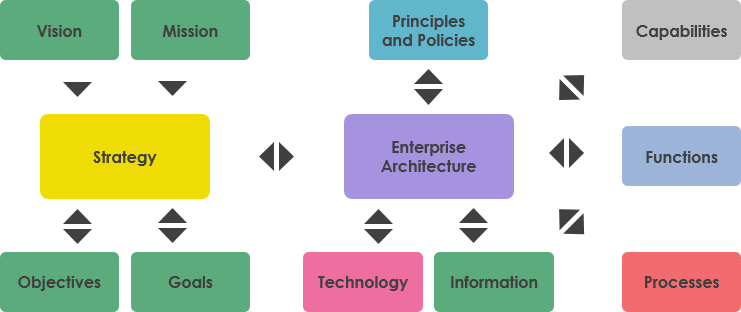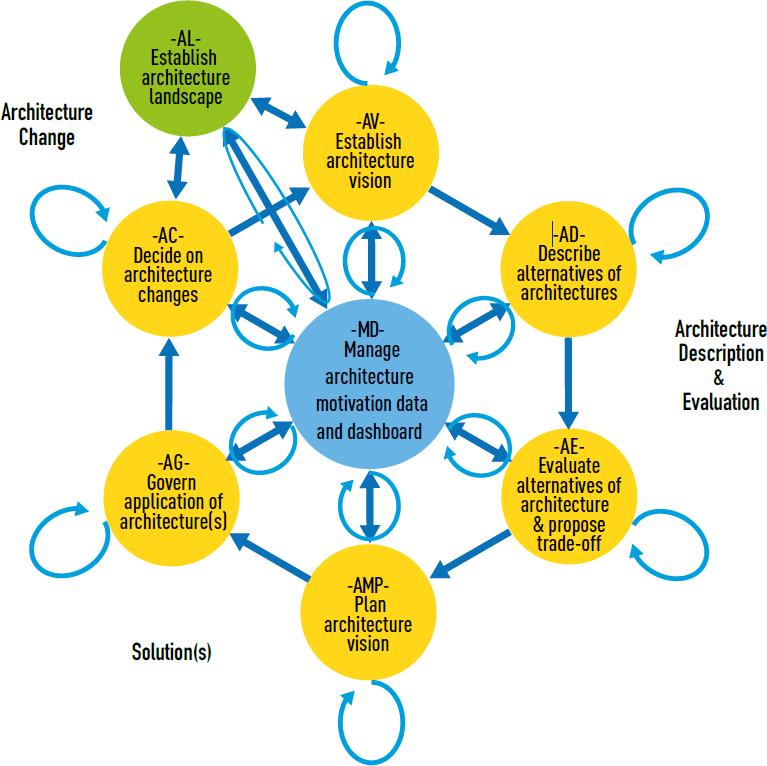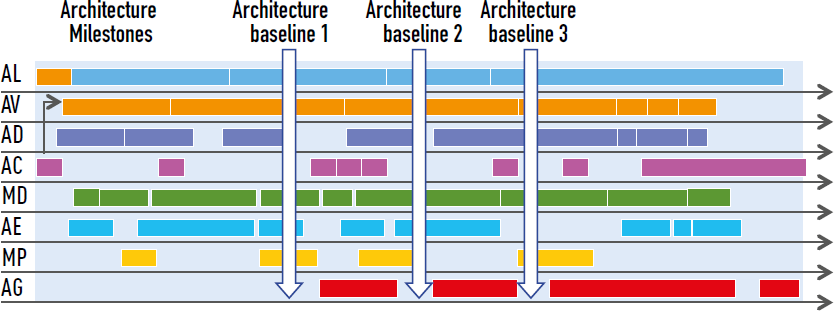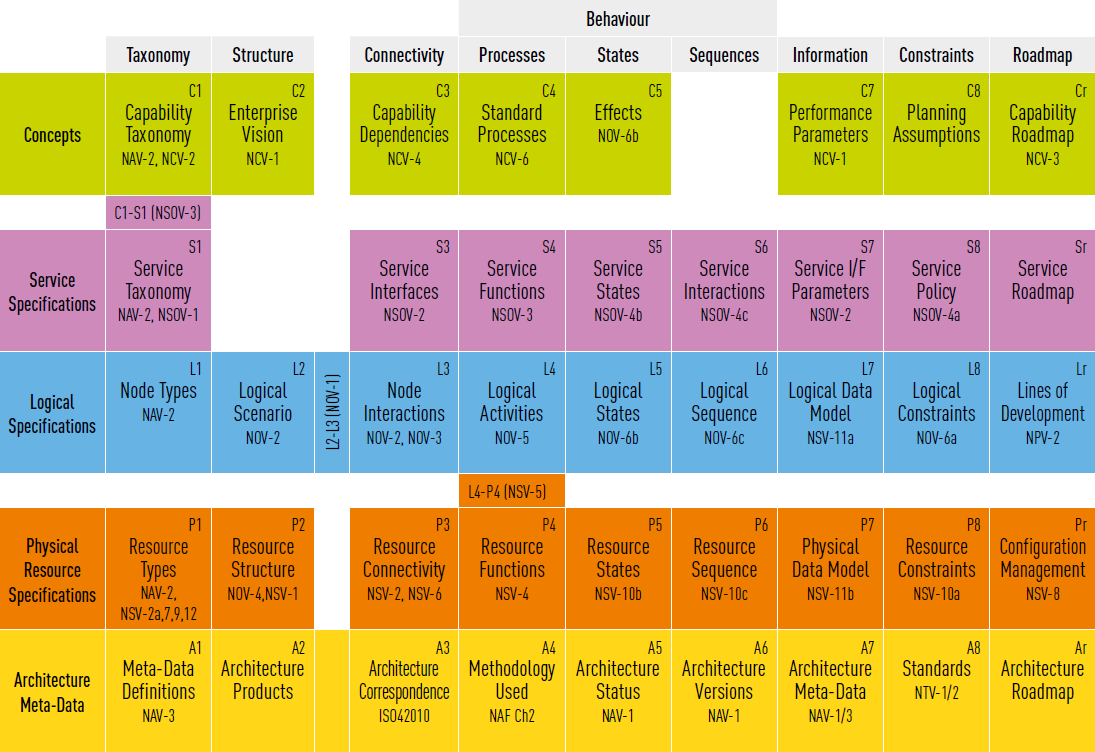The NATO Architecture Framework (NAF) provides the rules, guidance, and templates for developing and presenting architecture descriptions to ensure a common denominator for understanding, comparing, and integrating architectures in NATO.
The application of the NAF is designed to enable architectures to contribute most effectively to acquiring and fielding cost-effective and interoperable military capabilities. The role of enterprise architecture is to provide decision support, in the context of the enterprise strategy, for the use of resources (including processes and procedures) in the enterprise. In other words, the architecture is responsible for defining how resources will be used to support enterprise strategy and benefit the NATO goals and objectives.
The purpose of EA is to optimize across the enterprise, the often fragmented legacy of processes (both manual and automated) and systems, into an integrated environment that is responsive to change, living and ever-evolving business artifact. It takes a holistic view of both ‘business’ and ‘IT’ with business being the driver and IT an enabler. As each facet of a well-constructed Enterprise Architecture will have documented inter-dependencies it is unlikely that change in one place will not elicit change in another.

The aim of the NATO Architecture Framework Version 4 (NAFv4) is to provide a standard for developing and describing architectures for both military and business use. The objectives of the framework are to:
Architectures are developed for many purposes and their development can be described as both a process and a discipline. Architectures aid the development of systems that deliver solutions that can meet an organization’s needs to achieve its mission.
Not like DoDAF, it doesn’t provide method and process for us to follow, and in fact, NAF provides methodology in the v4 manual in Chapter 2 which includes concept, principles, and guidelines into EA development lifecycle model from accepted best practice to provide:
NAF architecture life cycle groups architecting activities inconsistent stages that can be orchestrated in different schemes; some activities can be repeated and several iterations involving specific stages may be necessary to reach architecture goals.

Objectives and plans of each phase are key inputs to the dashboard. Architects plan stages and define success criteria collected in the architecture motivation data. The architecture management plan captures justified cycles, iterations, and synchronizations with other tiers architectures.
Architecture dashboard synthesizes data needed to monitor architecting activities until architecture goals are considered as achieved or, until a decision to suspend part or whole of monitored activities is taken by the architecture board.

NAF details the viewpoints that makeup NAFv4. These are presented as a grid representation to organize the various subjects of concern (rows) and aspects of concern (columns), logically and consistently to aid architects, as shown below:

NAFv4 will be part of a NATO Architecture Body of Knowledge. The Body of Knowledge will include several guides to aid the adoption of NAFv4 such as:
Visual Paradigm provides an easy-to-use, model-driven NAF software that supports the development of NAF 4 views and models. Create integrated NAF products with traceability maintained among views. Generate architectural documents that facilitate organizations to efficiently coordinate enterprise architecture initiatives.
